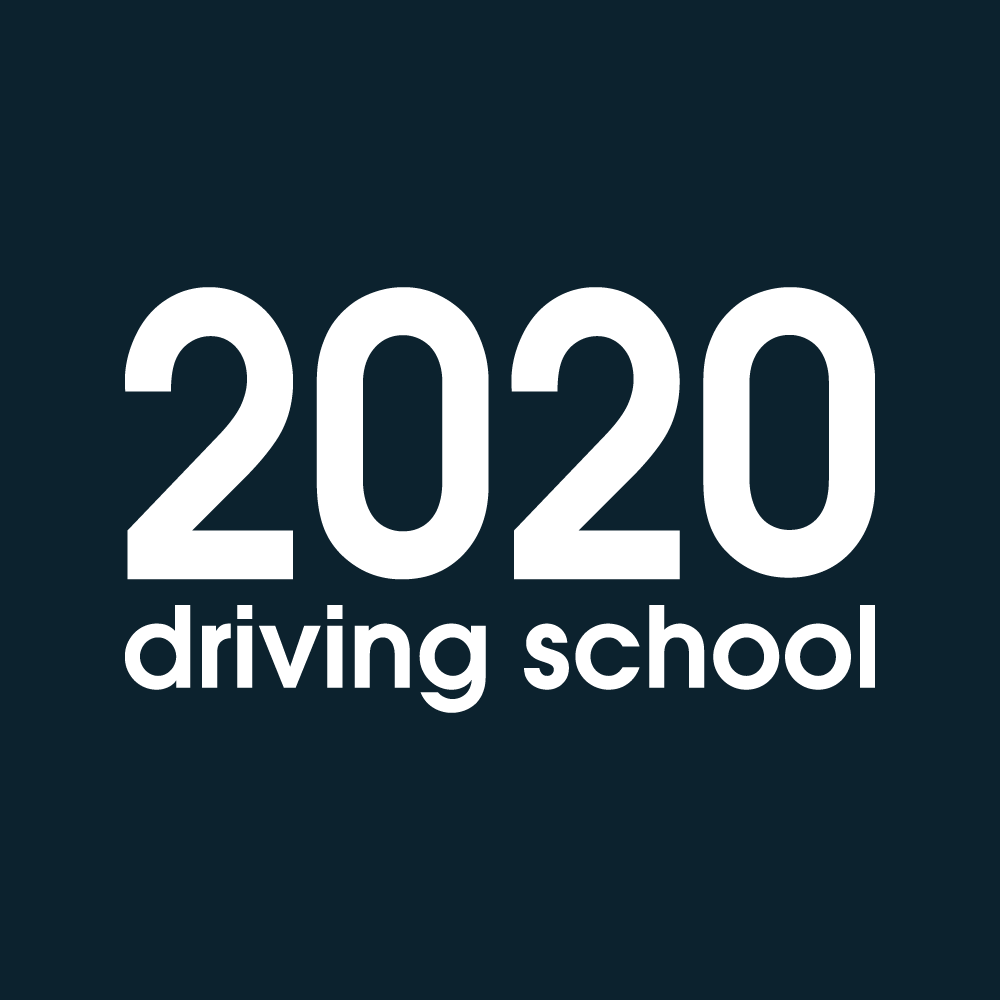
The moment you slide behind the wheel for your first driving lesson, everything changes. What seemed simple when watching from the passenger seat suddenly becomes a complex coordination challenge. At 2020 Driving School in Virginia, our new driver driving lessons have guided over 5,000 students through their first lesson experience since our founding. As certified Virginia driving instructors, here are the top 10 universal discoveries every new driver makes:
1. Your Brain Enters Information Overload Mode
New driver driving lessons immediately reveal that driving demands unprecedented multitasking abilities. While passengers casually observe, drivers must simultaneously control the vehicle, monitor traffic, read signs, and make split-second decisions. Research shows that high cognitive load significantly impairs decision-making abilities in new drivers. Most students describe feeling like they’re “thinking in slow motion” during their first lesson – a completely normal adjustment that our instructors see daily.
2. Every Movement Requires Conscious Mental Commands
Simple actions like checking mirrors or pressing brakes demand deliberate thought. New drivers discover that experienced drivers’ seemingly effortless movements actually involve dozens of micro-decisions that must become automatic through practice. Muscle memory doesn’t exist yet – everything requires active concentration. Our multilingual instructors help students process these commands to reduce cognitive burden.
3. Vehicles Are More Responsive Than Expected
Most students are genuinely surprised by vehicle sensitivity. The steering wheel requires less input than anticipated, brakes can be more responsive than expected, and the accelerator often provides more power than needed. First lessons involve calibrating physical inputs to match the vehicle’s actual responses – a process our instructors have refined through teaching thousands of Virginia students.
4. Spatial Awareness Gets Completely Restructured
Understanding where your vehicle exists in space becomes the day’s biggest perceptual challenge. New drivers must judge distances to other cars, estimate parking gaps, and navigate through spaces that initially seem impossibly narrow. The driver’s perspective differs dramatically from the passenger side, requiring mental adjustments to depth perception that typically take several lessons to develop.
5. Decision-Making Speed Must Accelerate Dramatically
Passengers observe without consequences, but drivers must make constant split-second choices: When to merge? Is that gap adequate? Should I stop for this yellow light? New drivers discover that hesitation can be just as dangerous as poor decisions, making quick, confident choices essential for road safety. Our instructors use proven techniques to build decision-making confidence progressively.
6. Traffic Pattern Anticipation Becomes Your Primary Skill
First lessons reveal that good driving isn’t reactive – it’s predictive. New drivers learn to read traffic patterns, anticipate other drivers’ actions, and prepare for changing conditions before they become problems. This forward-thinking mindset represents a fundamental shift from passenger observation to driver responsibility, particularly important on busy Virginia highways like I-95 and Route 1.
7. Every Vehicle Control Has Strategic Communication Purpose
Turn signals aren’t just courtesy – they’re precisely timed communication tools. Mirrors aren’t decoration – they’re safety instruments requiring constant attention. New drivers learn that every button, lever, and pedal serves specific functions in the complex system of road safety and traffic management, as detailed in the Virginia DMV Driver’s Manual. Understanding these communication signals reduces accident risk significantly.
8. Speed Management Involves Multiple Environmental Variables
Managing speed means much more than pressing pedals. New drivers discover they must consider traffic flow, road conditions, weather, visibility, and upcoming obstacles simultaneously. The “correct” speed isn’t always the posted limit – sometimes it’s slower, and occasionally (during merging) it needs to be faster. Virginia’s Driver’s Manual emphasizes using the two-, three-, and four-second following distance rule for varying speeds.
9. You’re Joining a Social Driving Community with Unspoken Rules
Driving involves constant interaction through positioning, speed, and signaling. New drivers learn they’re entering a social community where courtesy, predictability, and clear communication prevent conflicts and accidents. This social aspect often surprises students who viewed driving as purely individual activity. Virginia’s diverse driving culture requires understanding regional driving customs and expectations.
10. Confidence Builds Through Incremental Achievement Victories
Every new driver experiences breakthrough moments – successfully completing a turn, smoothly stopping at a light, or maintaining proper lane position. These small victories build the confidence foundation necessary for tackling complex driving scenarios in future lessons. Progress happens incrementally, not overnight. Research from Virginia Tech shows that teen drivers become safer with more practice, and our data shows students who celebrate small wins show faster skill development.
Professional Insights from Virginia’s Premier Driving Instruction
Your first lesson marks the beginning of acquiring one of life’s most complex motor skills. Unlike academic learning, driving education combines physical coordination, mental processing, legal knowledge, and social interaction into a single, demanding activity that affects public safety.
What makes first lessons particularly transformative is the immediate responsibility involved. From the moment you press the accelerator, you’re controlling a 2,000-pound machine requiring respect, attention, and skill. This responsibility often creates the motivation necessary for serious learning and development.
Evidence-Based Learning Approach
Our Virginia-certified instructors have developed a systematic approach based on over 15 years of teaching experience:
- Pre-driving vehicle familiarization reduces anxiety significantly
- Gradual skill introduction prevents cognitive overload
- Positive reinforcement techniques build lasting confidence
- Multilingual instruction accommodates diverse learning styles
- Local road familiarity prepares students for actual driving conditions
Setting Realistic Expectations for Success
Understanding these ten realities helps new drivers approach their first lesson with appropriate expectations. Rather than expecting immediate competence, successful students prepare for a learning curve that involves both mental and physical adaptation.
The journey from nervous beginner to confident driver starts with accepting that feeling overwhelmed is completely normal. Every skilled driver experienced the same cognitive overload, physical awkwardness, and decision-making uncertainty during their first lesson. Virginia teen crash statistics show that proper training through structured new driver driving lessons significantly reduces accident rates.
The key is patience with yourself and trust in the proven process of quality instruction. Professional driving education provides the structured environment necessary to develop these skills safely and efficiently. Each session builds upon previous learning, gradually transforming overwhelming tasks into automatic responses.
At 2020 Driving School, we design lessons to build confidence while establishing essential safety habits that last a lifetime. Your first hour behind the wheel sets the trajectory for your entire driving education experience – making it crucial to start with experienced, certified instructors.
Remember: every expert driver was once exactly where you are now. The difference between success and struggle often comes down to having realistic expectations, quality instruction, and the patience to let skills develop naturally through practice.
Ready to experience these discoveries firsthand? Contact 2020 Driving School today to schedule your first lesson and begin your journey toward confident, safe driving on Virginia’s roads.




